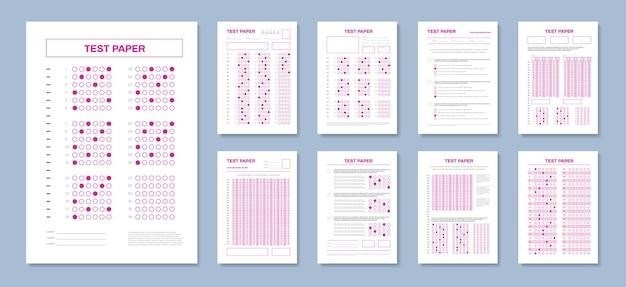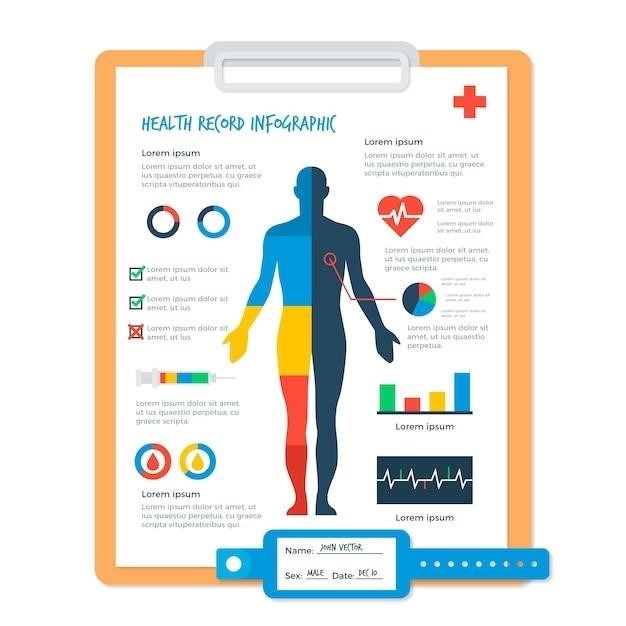Peabody Developmental Motor Scales⁚ A Comprehensive Overview
The Peabody Developmental Motor Scales (PDMS) is a widely recognized and extensively used assessment tool designed to evaluate the fine and gross motor development of children aged 0 to 6 years. The PDMS is a standardized, norm-referenced test that provides a comprehensive assessment of a child’s motor skills, helping to identify areas of strength and weakness, and guiding intervention strategies.
The History and Evolution of the PDMS
The Peabody Developmental Motor Scales (PDMS) traces its roots back to 1983, when the first edition was developed and published by Rhonda Folio and Rebecca Fewell. This initial version, known simply as the PDMS, served as a valuable tool for assessing the motor development of young children. However, recognizing the need for a more comprehensive and accurate assessment, the authors embarked on a revision process, leading to the publication of the second edition in 2000, aptly titled the PDMS-2.
The PDMS-2 represented a significant advancement in the field of motor development assessment. It incorporated a broader range of items, reflecting a deeper understanding of the intricacies of motor skills development. Additionally, the PDMS-2 incorporated extensive research and data analysis, resulting in improved reliability and validity. The PDMS-2’s introduction marked a pivotal moment, establishing it as a gold standard in the field, widely adopted by professionals working with children from birth to age 5.
Key Features and Benefits of the PDMS-2
The PDMS-2 stands out as a comprehensive assessment tool for motor development in young children, offering several key features and benefits that make it invaluable for professionals in various settings. One notable feature is its focus on assessing both fine and gross motor skills, providing a holistic view of a child’s motor abilities. The PDMS-2 also incorporates a range of subtests, each targeting specific aspects of motor development, allowing for a detailed analysis of a child’s strengths and weaknesses.
Furthermore, the PDMS-2 is designed to be user-friendly, with clear instructions and scoring guidelines, simplifying the administration and interpretation of results. Another significant advantage is the inclusion of the Peabody Motor Activities Program (PMAP), a supplementary resource that provides targeted activities for enhancing a child’s motor skills. This program serves as a valuable tool for therapists and educators seeking to support a child’s development in specific skill areas.
Subtests and Components of the PDMS-2
The PDMS-2 is structured around six distinct subtests, each designed to evaluate different aspects of motor development in children aged 0 to 6 years. These subtests are categorized into two primary areas⁚ gross motor and fine motor skills. The gross motor subtests include Reflexes, Stationary, Locomotion, and Object Manipulation, assessing a child’s ability to control their body, move through space, and interact with objects.
The fine motor subtests, Grasping and Visual-Motor Integration, focus on a child’s dexterity, hand-eye coordination, and ability to manipulate small objects. Each subtest consists of a series of age-appropriate tasks that are carefully calibrated to assess a child’s motor development relative to their peers. The results of these subtests provide a comprehensive picture of a child’s motor skills, highlighting areas of strength and areas that may require further intervention or support.
The PDMS-3⁚ A Refined Approach to Motor Development Assessment
The Peabody Developmental Motor Scales, Third Edition (PDMS-3), represents a significant advancement in the assessment of early childhood motor development. Building upon the foundation established by the PDMS-2, the PDMS-3 incorporates a refined approach to measuring interrelated motor abilities that develop early in life. This updated edition introduces a comprehensive assessment and remediation program, designed to not only identify a child’s motor strengths and weaknesses but also to provide a framework for targeted intervention and skill development.
The PDMS-3 features a more comprehensive assessment, encompassing a wider range of motor skills and incorporating new items to better reflect contemporary understanding of motor development. The assessment is designed to be administered efficiently, with a focus on providing valuable insights into a child’s motor abilities and potential areas for intervention, facilitating the development of personalized intervention plans to support each child’s unique motor development journey.
Applications of the PDMS in Clinical Settings
The PDMS is a valuable tool for a diverse range of professionals working in clinical settings, including occupational therapists, physical therapists, and early intervention specialists. Its applications span various areas of practice, providing essential insights into a child’s motor development and guiding intervention strategies.
The PDMS is commonly used to identify children who may be experiencing motor delays or difficulties. The assessment results can help professionals understand the nature and extent of the motor challenges, enabling them to develop individualized intervention plans to address specific needs. The PDMS also plays a crucial role in monitoring a child’s progress during therapy, allowing professionals to track improvements and adjust interventions accordingly.
In addition to individual assessments, the PDMS can be used for research purposes, providing valuable data on motor development in various populations. This data can inform the development of evidence-based interventions and contribute to a better understanding of the factors influencing motor development.
Interpreting PDMS Scores and Results
Interpreting PDMS scores requires a comprehensive understanding of the test’s structure and scoring procedures. The test provides both raw scores and standard scores, which are essential for understanding a child’s performance relative to their peers. Raw scores represent the number of items a child correctly completes on each subtest, while standard scores, such as quotients and percentiles, provide a more meaningful interpretation of the child’s performance;
The PDMS-2 provides three composite scores⁚ Gross Motor Quotient (GMQ), Fine Motor Quotient (FMQ), and Total Motor Quotient (TMQ). These quotients represent a child’s overall performance in each motor domain and provide a comprehensive picture of their motor development. Percentiles, which indicate the percentage of children in the normative sample who scored at or below a particular score, are also useful for understanding a child’s performance relative to their age peers.
It’s crucial to remember that PDMS scores alone don’t provide a complete picture of a child’s abilities. They should be interpreted in conjunction with other assessments, observations, and the child’s overall developmental history. A thorough understanding of the child’s individual circumstances, including their medical history, family background, and social environment, is essential for a complete and accurate interpretation of PDMS results.
The Peabody Motor Activities Program (PMAP)

The Peabody Motor Activities Program (PMAP) is an integral part of the PDMS-2 assessment kit, providing a structured and engaging approach to enhance motor development in young children. It serves as a valuable resource for therapists, educators, and parents, offering a range of activities designed to promote and refine gross and fine motor skills.
The PMAP is organized into six categories, each corresponding to a subtest on the PDMS-2⁚ Reflexes, Stationary, Locomotion, Object Manipulation, Grasping, and Visual-Motor Integration. Each category includes a variety of age-appropriate activities, presented in a sequential progression, allowing for gradual skill development. The activities are designed to be fun and engaging for children, encouraging active participation and promoting a positive learning experience.
The PMAP provides a framework for individualized intervention, enabling therapists and educators to tailor activities to meet the specific needs of each child. By addressing identified areas of weakness, the PMAP aims to enhance motor skills, improve coordination, and foster overall physical development in young children;

Comparison of the PDMS to Other Motor Development Assessments
The PDMS stands out as a comprehensive and widely recognized assessment tool for motor development in early childhood, but it’s essential to consider its strengths and limitations in comparison to other assessments available. While the PDMS provides a standardized and norm-referenced evaluation of gross and fine motor skills, other assessments might offer specific advantages depending on the child’s age, developmental concerns, or the purpose of the assessment.
For instance, the Bruininks-Oseretsky Test of Motor Proficiency (BOT-2) is another widely used assessment that covers a broader age range, from 4 to 21 years old. While the PDMS focuses on early childhood development, the BOT-2 assesses a wider range of motor skills, including balance, coordination, and strength, making it suitable for older children and adolescents. Furthermore, some assessments, like the Movement Assessment Battery for Children (M-ABC), are specifically designed to evaluate motor skills in children with suspected developmental delays or disabilities, offering a more targeted approach to identifying specific difficulties.
Ultimately, the choice of assessment depends on the individual child’s needs and the goals of the evaluation. Comparing the PDMS to other assessments helps professionals make informed decisions about the most appropriate tool for a particular situation.
Resources and Materials for the PDMS
For professionals utilizing the PDMS, accessing the necessary resources and materials is crucial for accurate administration and interpretation of the assessment. The PDMS-2 kit, available from Pro-Ed, Inc., provides a comprehensive set of materials, including the examiner’s manual, guide to item administration, examiner record booklet, profile/summary form, motor activities program, manipulatives, and the Peabody motor developmental chart; The examiner’s manual provides detailed instructions on test administration, scoring procedures, and interpretation of results. The guide to item administration offers step-by-step guidance on how to present each test item, ensuring consistent administration across different examiners.
The examiner record booklet allows for recording the child’s performance on each item, and the profile/summary form provides a concise overview of the child’s overall motor development. The motor activities program, a valuable component of the PDMS-2, offers specific activities and exercises to help children develop their motor skills, providing a practical tool for intervention and remediation. The manipulatives included in the kit are essential for administering various test items, and the Peabody motor developmental chart serves as a visual guide for tracking the child’s progress across different age groups.
Accessing the PDMS-2 PDF Document
While obtaining the complete PDMS-2 kit with its accompanying materials is ideal, accessing a PDF document containing the scoring sheet and instructions for the Gross Motor Scale can be helpful for specific purposes. This PDF document, typically available online, provides a valuable tool for understanding the structure and administration of the Gross Motor Scale, enabling users to familiarize themselves with the specific items and scoring criteria. It can be particularly useful for educators, therapists, or researchers who need a quick reference guide to the assessment components without needing the full kit.
The PDF document typically includes sections outlining the six subtests within the Gross Motor Scale⁚ reflexes, supine, prone, crawling, standing, and walking. Each subtest is detailed with its specific items, scoring instructions, and age ranges. While the PDF document serves as a helpful resource, it’s important to note that it does not substitute for the complete PDMS-2 kit, which includes essential components like the examiner’s manual, guide to item administration, and the motor activities program. These additional materials provide comprehensive guidance on administering, scoring, and interpreting the assessment for accurate and effective evaluation.
Case Studies and Research Findings Using the PDMS
The PDMS has been widely utilized in research studies, providing valuable insights into motor development in children. These studies have demonstrated the PDMS’s reliability and validity in assessing motor skills in various populations. For instance, research has explored the use of the PDMS to evaluate motor development in preterm infants, particularly those with low birth weight. Findings from these studies suggest that the PDMS, when adapted for this population, can effectively assess motor skills and aid in identifying potential developmental delays.
Case studies have highlighted the practical applications of the PDMS in clinical settings. These studies demonstrate how the PDMS can be used to identify specific areas of motor weakness, guide intervention strategies, and monitor progress over time. Research has also investigated the effectiveness of interventions, such as the Peabody Motor Activities Program (PMAP), in addressing identified motor deficits. By examining the impact of interventions, researchers can gain a deeper understanding of how to optimize motor development in children with motor challenges.
